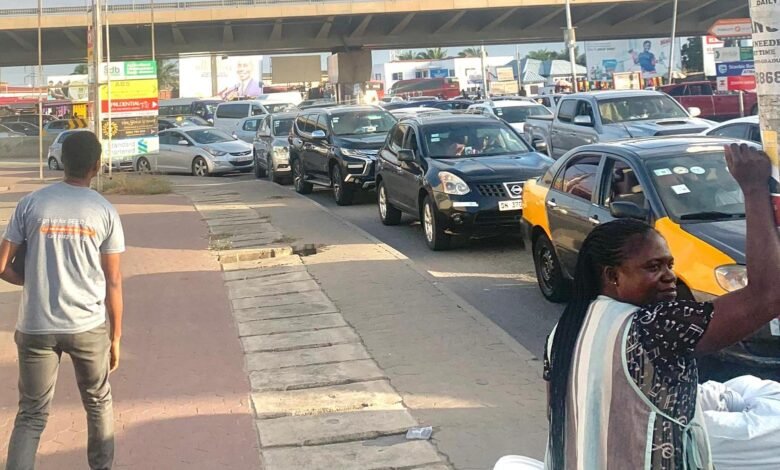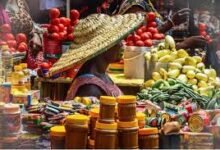
Commuters who use the Kwame Nkrumah Circle-Kaneshie route in Accra are grappling with extreme traffic congestion as work on the second phase of the Obetsebi-Lamptey Interchange project intensifies.
For over one week, multiple roadblocks have been mounted to divert the route, thereby narrowing the road and limiting the number of vehicles that can pass at a time.
The Circle-Kaneshie route is crucial for many commuters in the capital, as both areas host large transport hubs where residents catch vehicles to and from work daily.
The traffic jam, which builds up even before 8 am and again around 3 pm, becomes so severe that it causes a standstill on the Kwame Nkrumah Interchange, which was originally built to ease traffic.
The congestion spills over onto the Feo Oyeo road passing in front of the New Times Corporation, Fan Milk, and Television Africa, as drivers desperately seek alternative routes due to the closure of the stretch in front of Awudome cemetery.
Some commuters, unable to endure the gridlock, resort to completing their journey on foot while commercial motorcycle (Okada) riders meander through the gridlock, as well as take over the pedestrian walk ways.
Although traffic jams are characteristic of Accra, the situation has worsened over the last week, causing significant discomfort to commuters who have no alternative routes to their workplaces and homes.
When the Ghanaian Times visited the construction site on Thursday, there was heavy traffic from the Kwame Nkrumah Interchange towards Kaneshie with personnel from the Motor Traffic and Transport Department of the Ghana Police Service having a difficult time controlling the situation.
The reporters also observed that a portion of the road leading to the Abbosey Okai spare parts area had been blocked due to excavation work while a major drain close to the interchange was being constructed to address flooding challenges often experienced in the area.
The commuters who said the traffic jam had resulted in increased travel times, with some commuters arriving late to work and school, have, therefore called on the contractor to expedite work on the interchange.
Nana Yaw Mensah, a phone dealer, stated, “Improving traffic flow would make a big difference. It’s not just about us getting to work on time; it’s also about reducing stress and making our lives easier.”
A student, Michael Arthur, who was walking with his friends towards Kaneshie said the situation had been stressful and expressed the hope that the work would be completed before the annual Christmas gridlock sets in.
Mr Silas Acheampong, a commercial driver said “the traffic poses a serious safety risks, including increased stopping distances, potential accidents and driver tiredness. It is crucial for infrastructure improvements to prioritise drivers and public safety.’’
Mr Odoi Sackey, a commercial driver, expressed support for the reconstruction but noted its significant impact on his work.
“These delays resulting from the congestion have not only negatively impacted my daily income but also led to increased fuel consumption and vehicle wear and tear,” he said.
Another driver, Abdul Alhassan, shared his experience: “Before this traffic jam, I used to buy GH¢400 fuel for a day and make about seven rounds. Now, because of the delay on the road, I buy GH¢600 just for three rounds.”
Mrs Samuella Oduro, a private car driver, suggested that “The authorities should have done something to ease the traffic before starting the construction.”
The construction of the second phase of Obetsebi-Lamptey interchange costing 92 million Euros, started in February 2021 and involved the construction of the second-tier interchange from the Graphic Road towards Kaneshie — East to West.
Expected to be completed by December this year, the project aims to relieve traffic congestion by improving the existing roundabout and also building two flyovers thus, improve quality of life for drivers, pedestrians and citizens.
BY RICHMOND MENSAH & SARAH BOAKYE






